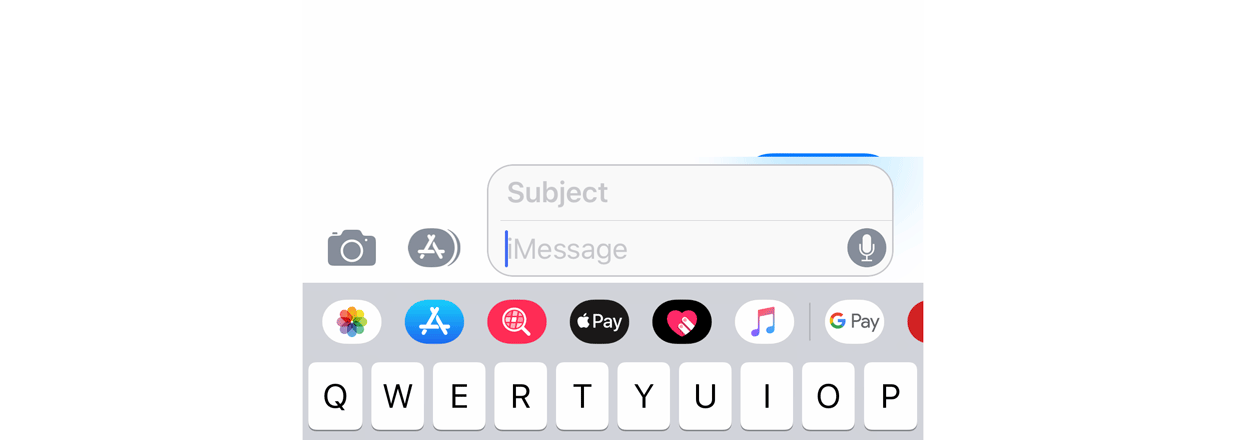In this section, we will address the five principles of nonverbal communication: our nonverbal communication is continuous, multichanneled, conscious/intentional and unconscious/unintentional, ambiguous, and can occur both face-to-face and through mediated platforms.
Nonverbal Communication is Continuous
In face-to-face interactions, nonverbal communication is continuous, ongoing, and in constant motion. While we can stop talking to end verbal communication, we can’t turn off nonverbal communication. Our posture, eye contact (or lack of eye contact), facial expressions, and physical appearance are always communicating something about us, whether intentional or unintentional.
Nonverbal Communication is Multi-channeled
A nonverbal message is rarely sent through just one channel in isolation, rather it accompanies multiple channels and occurs in clusters. For example, squinted eyes might be accompanied with a furrowed brow and/of a pursing of the lips. Because of this, we need to be aware of the entire cluster when decoding a particular message and look for nonverbal congruence. Nonverbal congruence is the consistency among the cluster of nonverbals we are observing, which influences our understanding of what message is being conveyed. For example, someone crossing their arms usually has a negative interpretation. However, since nonverbal communication is multichanneled, this particular body language should not be read in isolation; instead, other nonverbal cues should be considered. If someone is standing with their arms crossed and their eyebrows are furrowed, you might assume they are angry or upset based on nonverbal congruence. However, if someone has their arms crossed but they are smiling, then they likely are not angry.
Nonverbal Communication is Conscious/Intentional and Unconscious/Unintentional
Nonverbal communication is both conscious and unconscious, which means we use it both intentionally and unintentionally. Conscious communication means that we think about our communication before we communicate. Unconscious communication means that we do not think about every message we communicate. For example, when something funny happens, you probably do not think, “Okay, I’m going to smile and laugh right now.” Instead, you react unconsciously, displaying your emotions through nonverbal behaviors. Nonverbal communication can occur as unconscious reactions to situations. However, at times, we certainly make conscious choices to use or withhold nonverbal communication to share meaning. Angry drivers use many conscious nonverbal expressions to communicate to other drivers, and in a job interview you are making conscious decisions about your wardrobe, posture, and eye contact.
Nonverbal Communication is Ambiguous
While the symbolic and abstract nature of verbal language can often lead to misunderstandings, nonverbal communication is even more ambiguous. As with verbal communication, most of our nonverbal signals can be linked to multiple meanings, but unlike words, many nonverbal signals do not have any one specific meaning. If you’ve ever had someone wink at you and didn’t know why, you’ve probably experienced this uncertainty. Did they wink to express their affection for you, their pleasure with something you just did, or because you share some inside knowledge or joke? Just as we look at context clues in a sentence or paragraph to derive meaning from a particular word, we can look for context clues in various sources of information like the physical environment, other nonverbal signals, or verbal communication to make sense of a particular nonverbal cue. Unlike verbal communication, however, nonverbal communication doesn’t have explicit rules of grammar that bring structure, order, and agreed on patterns of usage. Instead, we implicitly learn norms of nonverbal communication, which leads to greater variance. In general, we exhibit more idiosyncrasies in our usage of nonverbal communication than we do with verbal communication, which also increases the ambiguity of nonverbal communication.
Nonverbal communication occurs face-to-face and through mediated communication channels
When most people think of nonverbal communication, they think of behaviors and actions directly connected to the body, such as gestures and facial expressions. And when most people think of the type of communication that takes place through mediated platforms, like text messaging and social media posts, they usually think of it as verbal communication. However, technology has changed and reshaped our conceptualization and definitions of what communication is and looks like in a variety of contexts. Scholars have equated communication such as text messages to ‘fingered speech’ (McWhorter, 2013) and these types of communication have transcended past our traditional definitions as they exhibit characteristics of both verbal and nonverbal communication simultaneously.
Due to the dynamic and ambiguous nature of this type of communication, we may use a variety of strategies to emphasize, substitute for, modify, and/or contradict the accompanying verbal message, which aligns with the definition of nonverbal communication. For example, facial expressions, gestures, and movement can be relayed through emojis, emoticons, and gifs. We can change, modify, and contradict the meaning of verbal messages through punctuation, the spelling of a word, and word elongation. Consider how the following message sent through a text message might be interpreted a variety of different ways based on these strategies:

On the decoding end, mediated messages can present more opportunities for misunderstanding than do face-to-face messages. This form of communication is not only light on nonverbal information, but it lacks opportunity for immediate feedback that may help to clarify intentions in order to achieve shared meaning. Have you ever heard someone talk about the need for a “sarcasm font?” Visuals can help, but the pitch and tone of intended sarcasm is difficult to convey through technology. Additionally, consider how lack of response to a text message can easily be misunderstood. We all have different norms and expectations for reply time. Consider how someone who checks their phone every few minutes might unintentionally misunderstand a less timely reply (a lengthy silence) from another person who only checks their phone every few hours.



